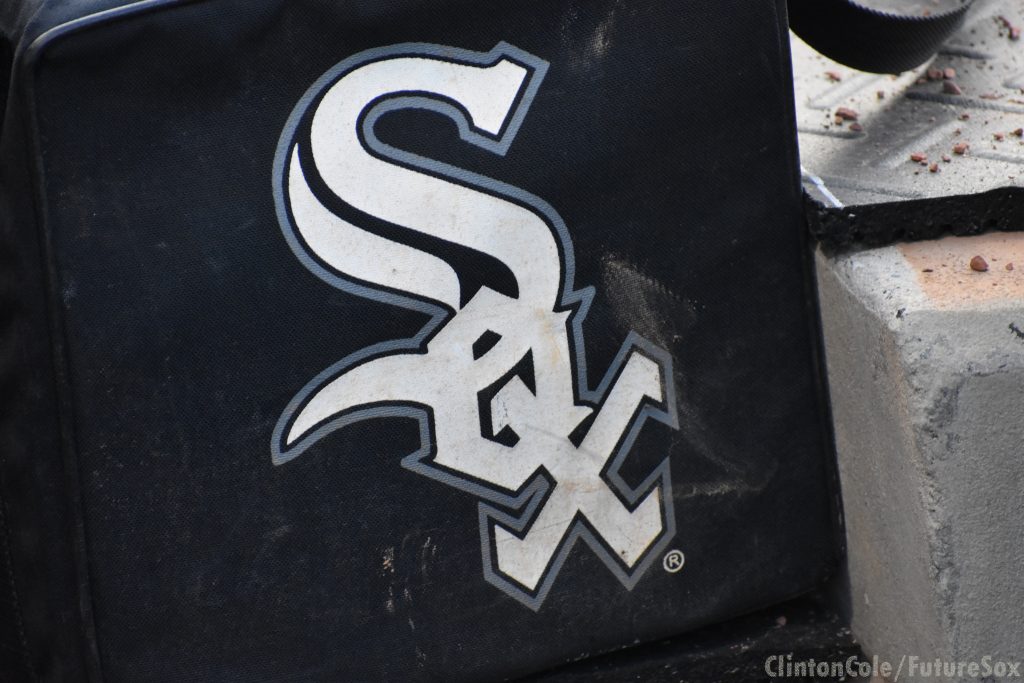Premium Talent the Focus for White Sox in 2020 Draft

via Clinton Cole
The arrival of Mike Shirley as Director of Amateur Scouting appeared to be a slight change for an organization undergoing plenty of it and one that has been slowly evolving from the past. During a SoxFest seminar, back when the world wasn’t on hold and folks were allowed to recreate publicly, the longtime scout was effusive in his words. Thrilled to have landed what appeared to be his ultimate dream job, Shirley offered praise for the organization and focused on a team approach to evaluation and player development.
Shirley’s department employs 17 area scouts, four cross-checkers, and three national scouts. In total, 30 employers comprise the White Sox scouting staff, which is considered on the larger side compared to the rest of the league. It also doesn’t include the research and development employees, special assistants, or front office heads.
The White Sox deploy more data than ever, but they are still a scouting based operation and that approach definitely has its benefits. In his first public appearance as director, the 49-year-old referenced a myriad of new technology used by the club, his love of multiple sport athletes, the premium he places on consistently adding prep talent and the philosophy of constantly attempting to find starting pitching.
When first introduced to the media back in September, Shirley’s love of scouting was evident.
“In our business, nobody has the perception that they are going to sit here someday. It was never the goal,” said Shirley, who was joined by his family for the on-field introduction. “I love scouting, to be honest with you.”
Whenever he speaks in any fashion, you can tell that the Indiana native has a passion for finding talent.
“This is quite a challenge for me,” Shirley went on to say. “It is an exciting challenge. We’re prepared for the challenge. I’m going to say this: ‘We, the White Sox as a whole, from [executive vice president] Kenny Williams to [general manager] Rick Hahn on down this place, are going in the right direction.’ We will do our part to keep us going in the right direction.”
Unique Draft Process
In most years, 1,200 players get selected and begin their respective journeys as professional baseball players. Due to the COVID-19 pandemic and contentious labor talks between the owners and the MLBPA, this year’s major league baseball draft was limited to just five rounds.
Mike Shirley had to change his process on the fly and he was prepared to deal with the unique circumstances. When asked how this year would be different than others, Shirley was honest about the process.
“Our ability to actually be boots on the ground in a typical cycle means we’re grinding every day at the ballpark and that was eliminated from us,” Shirley told reporters a week prior to the draft. “We felt like we had prepared extremely well heading into this spring. In a lot of ways, we didn’t get what we needed, but we are prepared to make five rounds.”
In this “work-from-home world,” major league organizations were tasked with the same environmental changes as everyone else. Because of that, the scouting department found some silver linings in their usual process.
Unlike most years when clubs would fly out representatives to colleges and high school hometowns for specific meetings with prospects, all of those conversations were conducted remotely in 2020. In addition to meeting with the prep players on zoom calls, the large scouting staff was able to see various high school talent during this scouting cycle.
“The high school players have been a little bit different due to the fact that the activity watching them play during the spring has not been there, but we spent so much of our summer on the high school player,” Shirley said. “For the most part, I want to say about 60-65 percent of the high school players, we did actually see play this spring, especially in the warmer climates of Florida, California and Texas. We did attack those players and we did get some looks at these guys.”
As for college athletes, the process is a bit different. They typically have multiple games per week and in-person classes to attend in addition to having schedules drawn out for them by the minute. Shirley seemed pleased that he was able to speak with college players without jumping through the hoops often associated with that dynamic.
The veteran evaluator said related to communication and data evaluation, “From a college standpoint – this is the most access we have had to college players since I’ve been scouting.”
Focus on Power Pitching
With the 11th overall pick in the first round, the White Sox selected Tennessee left-hander Garrett Crochet. It was a rumored pick for the club and fits their recent trend of selecting college players with their first choice.
The southpaw has earned some comparisons to Chris Sale and while that’s lofty praise, some of the similarities are warranted. The 20-year-old lefty has an interesting profile and made a quick ascension to what he’s become as a prospect.
“He’s an extraordinary talent,” said Shirley. When asked to elaborate on the reasons behind his selection, the Sox scouting director explained, “the fastball is top of the charts, the slider is a wipeout pitch that will continue to get better and the changeup is a pitch that we’re excited about as well.”
For the 6-foot-6 220-pound southpaw to excel in a starting role, he’ll need the “three pitch weaponry” that Shirley has repeatedly praised. Shirley has said that Crochet’s delivery “has some deception to it” and he loves that he’s a “super athlete.”
Being a quality athlete is one reason why Crochet went from throwing 84-85 mph in his first year on campus to consistently pumping 96-100 mph in his junior year at Tennessee. His growth as a pitcher and as a prospect seems to be a testament to his character and work ethic.
The White Sox are making a significant bet on upside in this case, but the organization clearly believes in the player. There are some injury concerns, questions about the third pitch and some reliever risk as well.
Related to injury concerns, Crochet has ramped up his workload recently and made it back to pitch for the Tennessee Volunteers before the season shutdown. His injury was described as a strained muscle in the shoulder and isn’t expected to be an issue going forward.
Crochet has only pitched 132 innings in college and made just 13 career starts. The White Sox are focusing on what they think he’ll do in their organization, as opposed what he’s already done in his career.
Shirley called 2nd rounder Jared Kelley a “top of-the-rotation type arm” and what the White Sox were able to accomplish at 47th overall was a surprise to most. Kelley is one of the very best prep pitchers in the draft class and the bonus amount he ultimately lands will lead further credence to that fact.
The 6’3″ 225 pound righty posted a record of 32-3 for Refugio High School in Texas with an ERA of 0.43. In 12 innings this spring, Kelley struck out 34 of the 36 hitters he faced and posted an ERA of 0.00. Shirley told reporters that the White Sox are, “very lucky and fortunate to be able to secure his services,” in reference to the selection of Kelley in the 2nd round.
Thought by many to be the best high school starter in the 2020 draft class, Kelley’s profile comes with some risk as well. The Texas prep standout has what scouts call a “now body with now stuff.” Some think that the profile is already more developed than certain clubs would like. He has less projection remaining in theory than some other prep pitchers, but the White Sox appear to be quite satisfied with what he brings to the table.
The Gatorade National Player of the Year possesses a mid 90’s fastball that grades at 65 or better with a plus changeup as well. Kelley has an easy delivery and pumps heat consistently and effortlessly while commanding his pitches on a regular basis. In discussing Kelley with the local media on a conference call, Shirley laid out the reasons why the White Sox wanted him so badly.
“The fastball plays with plus command and the changeup is a real weapon,” he said. The director of scouting also pushed back against the notion of a subpar breaking ball as well by stating that, “the breaking ball has consistently developed with more shape and depth.”
Bonus Pool Creativity
The White Sox entered Wednesday with a bonus pool comprised of $7,764,800. Their first round slot at No. 11 overall called for a slot bonus of $4,547,500. Indications are that the selection of Garrett Crochet didn’t save the club any money in that spot.
Pick No. 47 comes with a bonus pool amount of $1,580,200. With a scholarship to the University of Texas in tow, Kelley’s bonus demands were rumored to be around $3 million. It was fairly evident that the White Sox would have to enter money saving mode in regards to the rest of their draft class in order to lock up two top-20 arms in the class.
In the third round, the White Sox selected Adisyn Coffey out of Wabash Valley Community College in downstate Illinois. Coffey was committed to Lousiville and originally started his college career at Arizona State. Coffey wasn’t ranked at MLB Pipeline or with Baseball America and this selection was done with savings in mind.
Coffey is an interesting player, however. Shirley called Coffey a, “plus athlete with some two-way ability.” The 6-foot-2 195 pounder has played all over the diamond and shows a 94-97 mph fastball with an occasional plus slider on the mound. Shirley said that the staff is “anxious to see him further transition to the mound” and he was expected to serve a role in the bullpen for Louisville next year.
Kade Mechals of Grand Canyon University was the selection for the White Sox in round four. At 5-foot-11 and 185 pounds, the right-hander posted a 2.08 ERA with 155 strikeouts over nearly 130 innings pitched in college.
Mechals recently underwent Tommy John Surgery and he won’t pitch again in 2020. The No. 112 pick wasn’t strictly a pool space padder, though, as Shirley had the scouting report on the righty after the draft’s conclusion.
Mechals sits 90-93 mph with his fastball and Shirley thought the “stuff was really ticking up” prior to the surgery. Shirley said that the White Sox took him because of the “elite carry on his fastball, really good breaking ball and the ability to pitch north and south in the zone.”
In the 5th round, the White Sox selected Auburn lefty Bailey Horn with the 142nd pick overall. Horn was the Sunday starter for Auburn this year after recovering from arm injuries in 2019. The redshirt junior is interesting and may have benefitted further from having a full season in 2020.
Horn is a 6-foot-2 212-pound lefty that posted a 3-1 record with a 2.08 ERA with 27 strikeouts over 17.1 innings this past season. Shirley noted that Horn was “coming back post surgery” and has a fastball that sits in the “90-94 mph range.” The scouting staff liked that Horn was a “plus competitor with an SEC pedigree and a breaking ball that’s really coming along.”
In order to lock up Jared Kelley, the organization made the decision to go way under-slot in rounds 3-through-5. While we don’t have the actual bonus numbers for any of these players, Shirley made note of this decision late on Thursday night.
“Obviously we had to be creative with our pool,” he said. The bonus slot in rounds three and four were $733,100 and $517,400, respectively. That pool space in addition to the full slot for the 2nd rounder likely got them close to paying for their top two selections in this draft. This approach to acquiring high end talent isn’t something the White Sox have done frequently, but it could become a new trend for the club.
The White Sox added eight prep talents in the 2019 draft and employed a similar strategy this year by maximizing their pool space and utilizing their area scouts. In last year’s draft, the scouting staff focused on college seniors to save funds in rounds 5-through-10 and while this year was a bit different, the overall philosophy of adding premium talent remained the same.
This sort of deviation from a previous norm could become a trend for the White Sox under the leadership of Mike Shirley. Arguments can certainly be made that playing things more conservatively in a deep class like this and adding talent throughout was the better move. The White Sox clearly believe that their priorities are in line, though.
“We walk out of the 2020 draft thinking we’ve got two elite arms,” said Shirley. “That’s a good draft.”
Photo credit: Clinton Cole/FutureSox
Want to know right away when we publish a new article? Type your email address in the box on the right-side bar (or at the bottom, if on a mobile device) and click the “create subscription” button. Our list is completely spam free, and you can opt out at any time. Also, consider supporting FutureSox on Patreon! You can get early access to special articles and Patreon-only posts, in addition to more benefits you can read about here.






